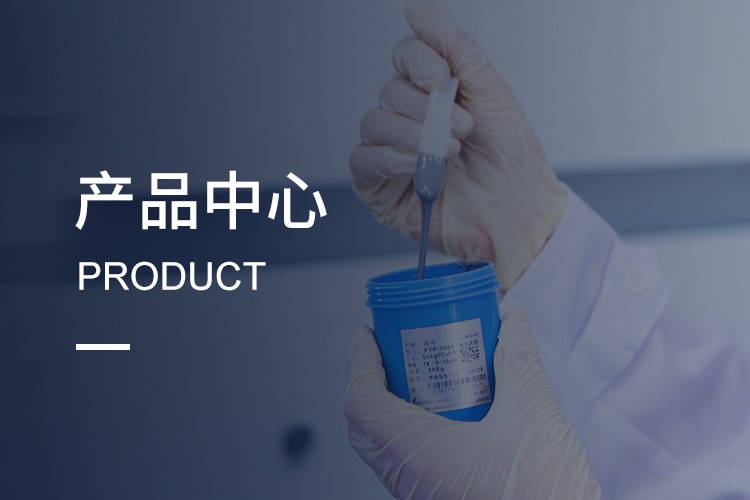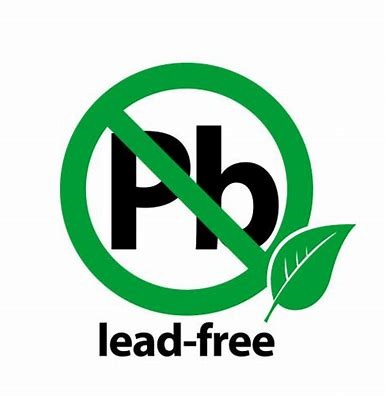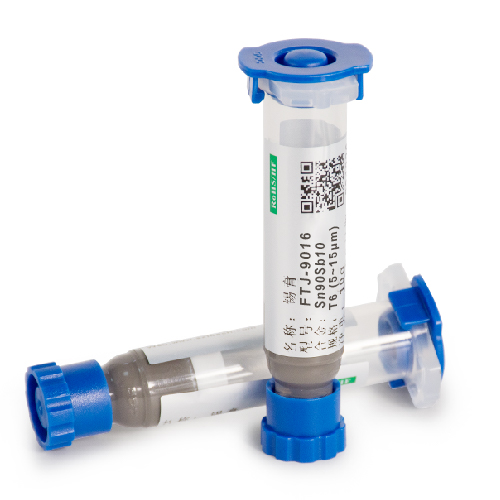FTJ-901
FSA-901P/D
FTD-901
FH-260D
FH-260P
FTP-901
FSA-901 series epoxy solder paste is composed of high-temperature Sn90Sb10 solder powder and halogen-free flux. Only a tiny amount of solvent evaporates during the soldering and solidification process. There is no solder ball formation after soldering. The solder powder melts and shrinks, and the solder joints are metallurgical connections, which are equivalent to the soldering effect of solder paste. FSA-901 epoxy solder paste is unnecessary to clean. The solder residue becomes thermosetting adhesive to reinforce the solder joints and enhance the anti-corrosion and insulation performance. The product is excellent for high-temperature soldering.
1. Before Curing:
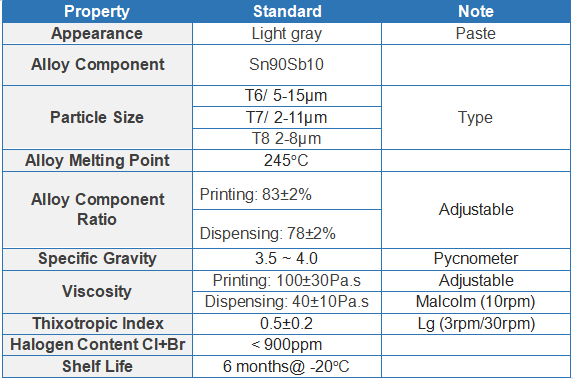
2. After Curing:
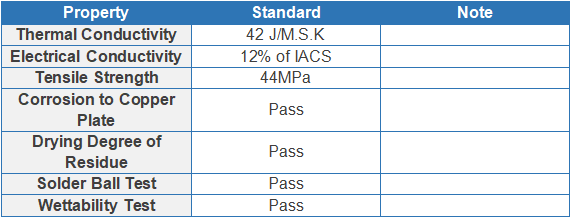

Warming Method: The sealed solder paste should rewarm to room temperature naturally; Rewarm no more than twice.
Warming Time: Rewarm 2 to 3 hours at room temperature. The actual time required to reach thermal equilibrium varies by vessel size.
Note: Do not open the bottle cap without sufficient rewarming or shorten the rewarming time by using heating equipment.
Operating Environment: The best operating temperature and humidity are 20-25°C and 40-50%RH, respectively. Reflow soldering in a nitrogen atmosphere is recommended.
Stencil Cleaning Solvent: Ether. Propylene glycol monomethyl ether (PM) is preferred.
SnSb10 alloy solder powder with excellent sphericity, uniform particle size, and low oxygen content is mixed with no-clean flux to produce FTD-901 series solder paste based on metallurgical method and chemical structure. The solder paste has a superior adhesion effect before soldering. Solvent volatilizes very slightly during soldering. Moreover, FTD-901 has outstanding wettability, anti-slump, and residue reduction properties. It is developed to meet the market demand for heat-resistant microelectronic assembly and precision soldering. The product has extraordinary heat resistance and heat dissipation abilities. It also improves the voiding of solder joints and the strength and conductivity of intermetallic compounds.
1. Before Curing:

2. After Curing:
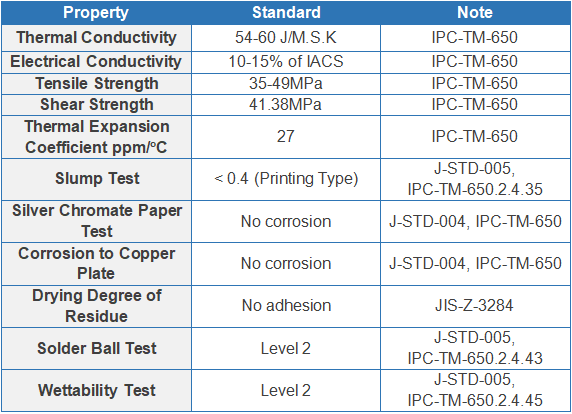
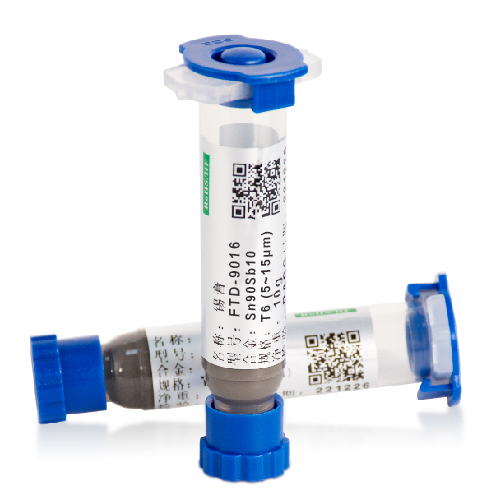
Warming Method: The sealed solder paste should rewarm to room temperature naturally; Rewarm no more than twice.
Warming Time: Return to warm for 2 to 3 hours at room temperature. The actual time required to reach thermal equilibrium varies by vessel size.
Note: Do not open the bottle cap without sufficient rewarming or shorten the rewarming time by using heating equipment.
Operating Environment: The best operating temperature and humidity are 20-25°C and 40-50%RH, respectively. Reflow soldering in a nitrogen atmosphere is recommended.
FH-260 solder powder with excellent sphericity, uniform particle size, and low oxygen content is combined with halogen-free flux to produce FH-260D series solder paste. It is a high-temperature lead-free product developed for secondary reflow soldering of power semiconductor and microelectronic packaging. The alloy is synthesized based on bismuth elements by adding reinforced micro/nanoparticles, successfully replacing high-lead solder paste, and meeting RoHS environmental protection standards.
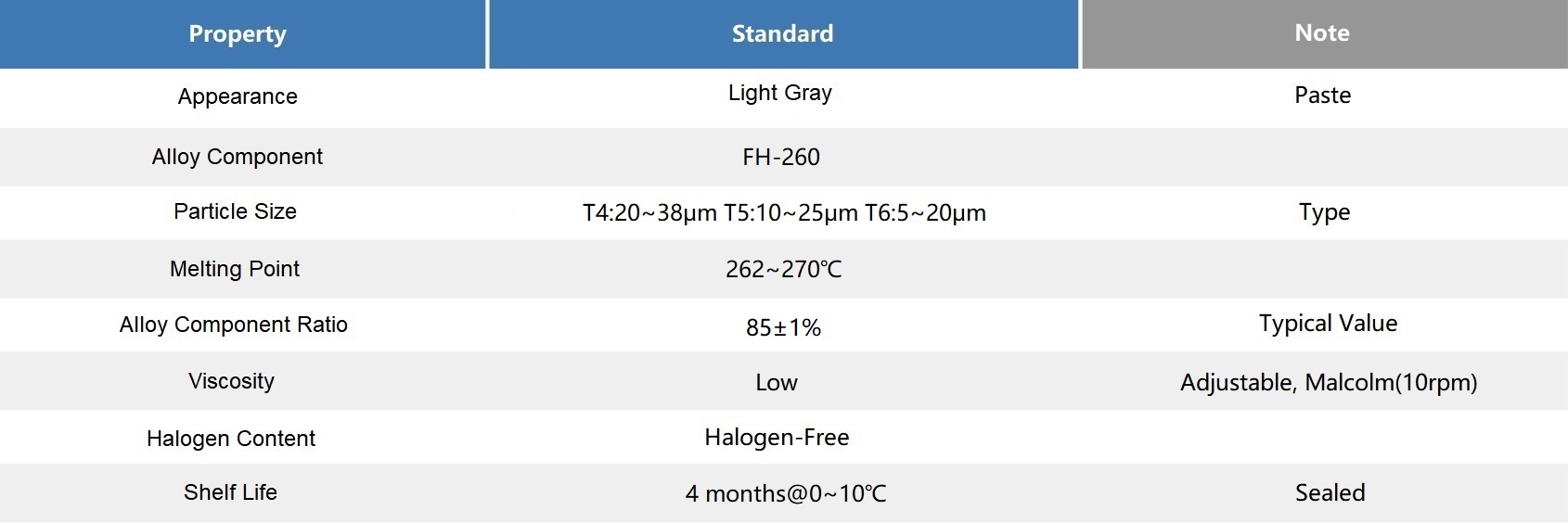


Warming Method: The sealed solder paste should rewarm to room temperature naturally; Rewarm no more than twice.
Warming Time: Rewarm 2 to 3 hours at room temperature. The actual time required to reach thermal equilibrium varies by vessel size.
Note: Do not open the bottle cap without sufficient rewarming or shorten the rewarming time by using heating equipment.
Operating Environment: The best operating temperature and humidity are 20-25°C and 40-60%RH, respectively. Reflow soldering in a nitrogen atmosphere is recommended.
FH260 solder powder with excellent sphericity, uniform particle size, and low oxygen content is combined with halogen-free flux to produce FH-260P series solder paste. It is a high-temperature lead-free product developed for secondary reflow of power semiconductor and microelectronic packaging. The alloy is synthesized based on bismuth elements by adding reinforced micro/nanoparticles, successfully replacing high-lead solder paste, and meeting RoHS environmental protection standards.
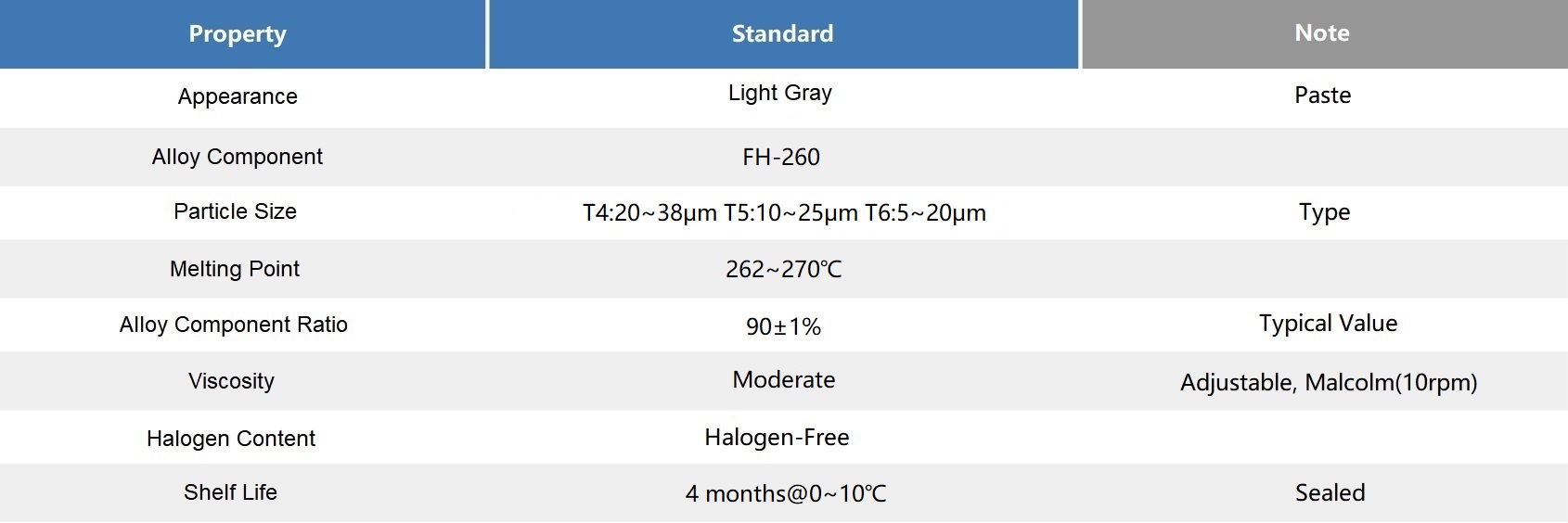

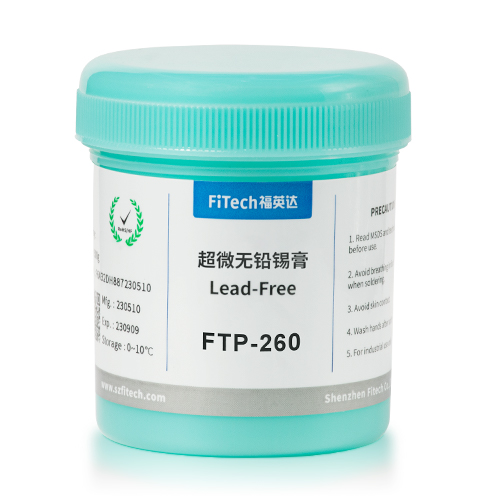
Warming Method: The sealed solder paste should rewarm to room temperature naturally; Rewarm no more than twice.
Warming Time: Rewarm 2 to 3 hours at room temperature. The actual time required to reach thermal equilibrium varies by vessel size.
Note: Do not open the bottle cap without sufficient rewarming or shorten the rewarming time by using heating equipment.
Operation Environment: The best operating temperature and humidity are 20-25°C and 40-60%RH, respectively. Reflow soldering in a nitrogen atmosphere is recommended.
SnSb10 alloy solder powder with excellent sphericity, uniform particle size, and low oxygen content is mixed with no-clean flux to produce FTP-901 series solder paste based on metallurgical method and chemical structure. FTP-901 has a superior adhesion effect before soldering. Solvent volatilizes very slightly during soldering. Moreover, FTP-901 has outstanding wettability, anti-slump, and residue reduction properties. It is developed to meet the marketing demand for heat-resistant microelectronic device assembly and precision soldering. The product has extraordinary heat resistance and heat dissipation abilities. It also improves soldering voiding and the strength and conductivity of intermetallic compounds.
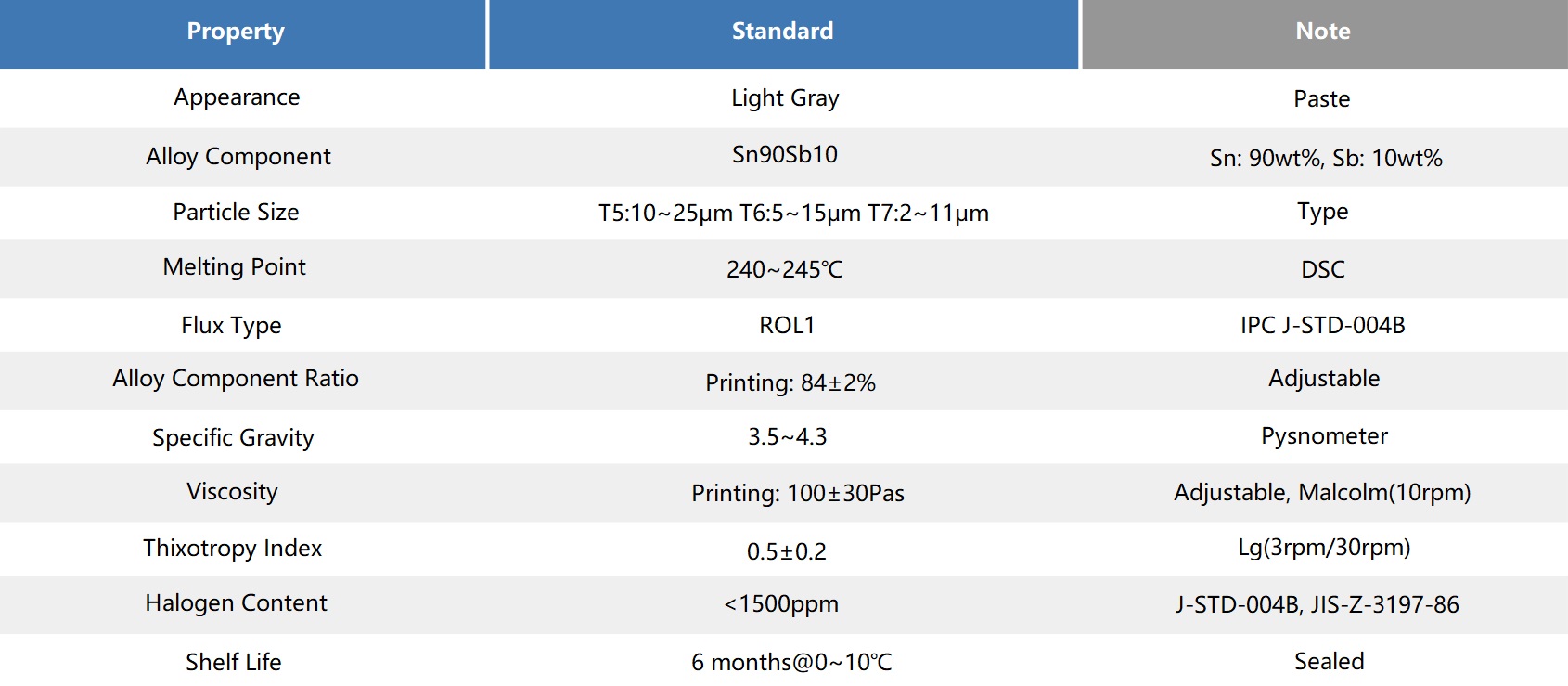
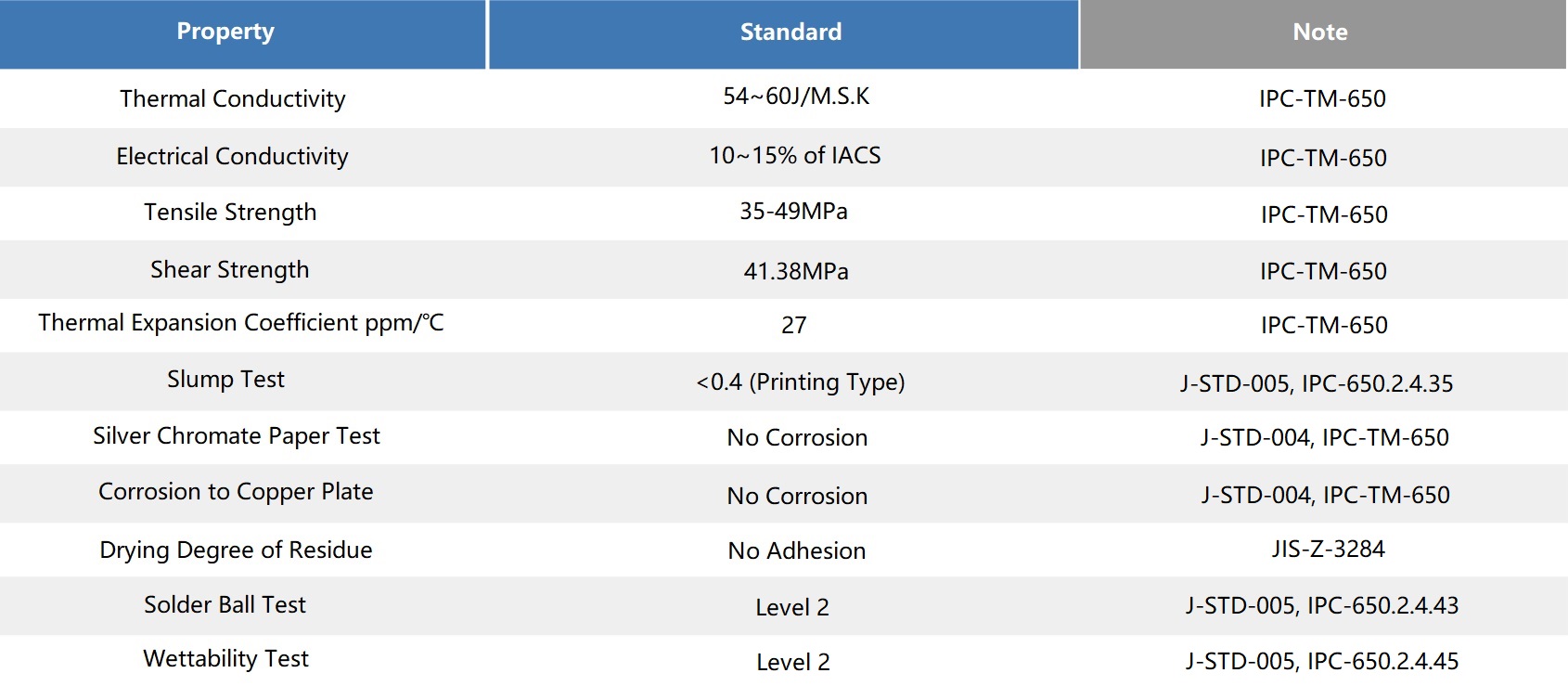
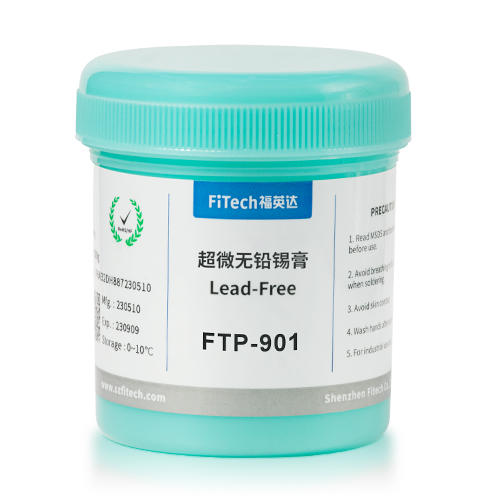
Warming Method: The sealed solder paste should rewarm to room temperature naturally; Rewarm no more than twice.
Warming Time: Return to warm for 2 to 3 hours at room temperature. The actual time required to reach thermal equilibrium varies by vessel size.
Note: Do not open the bottle cap without sufficient rewarming or shorten the rewarming time by using heating equipment.
Operating Environment: The best operating temperature and humidity are 20-25°C and 40-50%RH, respectively. Reflow soldering in a nitrogen atmosphere is recommended.







